Vanastha (Healing in Ulju) (와나스타(울주에서 치유하다))
0m 0 2024-01-10
207 Daeam 1-gil, Eonyang-eup, Ulju-gun, Ulsan
Vanastha, located in the forest inside Daeam Dam in Ulju-gun, is a forest yoga house that means "stay in the forest." For modern people who lack time to look back on their bodies in their tired daily lives, it provides time to fully focus on themselves with proper breathing, meditation, and Hatha yoga. Here, one can hear the sounds of nature, feel nature, and experience of becoming one with nature and the universe, only in nature. It offers a one-day class and a yoga meditation program on Saturday mornings. Private session option is available for a group of four or more people with a reservation in advance.
Eonyang Jinmi Bulgogi (언양진미불고기)
4.6 Km 11 2024-02-20
33 Jungpyeong-ro, Samnam-eup, Ulju-gun, Ulsan
Eonyang Jinmi Bulgogi specializes in using Korean beef to create tender and flavorful Jinmi Bulgogi, where the natural taste of the ingredients is preserved. The signature dish features fresh beef topped with plenty of minced garlic, grilled to perfection over charcoal. The rich and well-presented side dishes, including yukhoe (beef tartare), complement the main dish and enhance the overall dining experience. The unique aspect of Eonyang Jinmi Bulgogi is the enjoyment of the dish without broth, grilling the meat on the grid and savoring it with green onion threads.
Eonyang Giwajip Bulgogi (언양기와집불고기)
4.9 Km 13 2024-02-20
86 Heonnyang-gil, Eonyang-eup, Ulju-gun, Ulsan
Eonyang Giwajip Bulgogi is a more than 40-year-old establishment housed in a renovated hanok with a history exceeding 100 years. Eonyang bulgogi is crafted by finely mincing beef, seasoning it with various spices, and grilling it on charcoal until it becomes wide and flat. The use of a gridiron for grilling imparts a distinct smoky flavor, and the mild seasoning contributes to a pleasant texture. When wrapped in fresh vegetables alongside pajeori (green onions), the combination produces an outstanding taste. The doenjang jjigae (soybean paste jjigae) and side dishes, known for their subtle seasoning, offer a clean and refreshing taste.
Galbi Gurakbu (갈비구락부)
5.0 Km 21073 2024-02-20
34-12 Namsangpyeong 2-gil, Samnam-eup, Ulju-gun, Ulsan
Galbi Gurakbu specializes in Eonyang bulgogi (Eonyang-style bulgogi), exclusively using the highest-grade female Korean beef. Eonyang bulgogi involves finely minced beef, generously seasoned, and grilled wide and flat on a gridiron. The mild seasoning ensures a pleasant texture without being overly stimulating. The restaurant boasts other excellent dishes, including siraegi doenjang jjigae (dried radish leaf soybean paste jjigae), so deungsim gui (grilled beef sirloin), yukhoe (beef tartare), and sogalbisal (grilled boneless galbi). Conveniently located, just a 5-minute taxi ride from KTX Ulsan Station.
Jogeummaru (조금마루)
5.3 Km 12 2024-02-20
9 Seosangpyeonggangbyeon-gil, Samnam-eup, Ulju-gun, Ulsan
Jogeummaru is a duck specialty restaurant that exclusively utilizes domestically-raised ducks in its culinary creations. The ducks are raised with sulfur, contributing to a clean and rich flavor profile, free from undesirable odors. The signature menu features ori yangnyeom bulgogi (duck bulgogi), ori tang (duck soup), and ori sutbul gui (charcoal-grilled duck). Ori yangnyeom bulgogi entails duck marinated in a spicy seasoning, grilled on a pan with added chives. Ori tang is a meticulously prepared broth cooked for 12 hours, incorporating various vegetables. Additionally, eomnamu ori baeksuk (whole duck soup with castor aralia) offers a unique dish where duck is boiled with medicinal herbs.
Amethyst Cavern Park (자수정동굴나라)
6.7 Km 105568 2022-09-06
212, Jasujeong-ro, Ulju-gun, Ulsan
+82-52-254-1515
Amethyst Cavern Park is the largest man-made cave tourist attraction in Korea, where one of the five jewels of the World, amethyst, was mined. Connected like a labyrinth, the cave is 2.5 kilometers long and fills an area of approximately 15,000 square meters. The average temperature is between 12 and 16 degrees Celsius year round. Visitors can take either the walking tour that goes through a different themed halls or take a boat ride through the cave river. On the second floor of the cave, visitors can see Jurassic World filled with different dinosaurs and character lamps.
Petroglyphs of Bangudae Terrace (울주 대곡리 반구대 암각화)
7.1 Km 26550 2023-07-17
285, Bangudaean-gil, Ulju-gun, Ulsan
+82-52-204-0322
In Daegok-ri, Eonyang-eup sits Bangudae Terrace, a picturesque spot where a ridge of Yeongosan Mountain extends to and stands tall to form quite a spectacle featuring uniquely shaped rocks and cliffs. The name, Bangudae, comes from how it resembles a turtle lying prone on the ground. Petroglyphs are paintings drawn by people from the prehistoric times carved on rocks and depicting various scenes and events in their daily lives. Petroglyphs were often drawn on enormous rocks and other sacred locations of groups, and it is believed that people gathered around them to hold various rituals.
Petroglyphs of Bangudae Terrace in Daegok-ri, Ulju-gun are estimated to have been drawn over several periods since the New Stone Age so you can discover the differences in styles among various ages. Primary objects that were popularly carved include sea animals, land animals, humans and tools and, as our prehistoric ancestors actively engaged in hunting, the hope of abundance in game is believed to be the reason why these objects were frequently carved on rocks. Vividly expressing animals and hunting scenes and colorfully depicting outstanding traits of objects, these petroglyphs are a form of both hunting art and religious art, and they are considered as the greatest masterpieces from which we can take a peek at the life and customs of the prehistoric ages.
Ulsan Petroglyph Museum (울산암각화박물관)
7.5 Km 34628 2021-02-22
254, Bangudaean-gil, Ulju-gun, Ulsan
+82-52-229-4797
Ulsan Petroglyph Museum was established on May 30, 2008 at the entrance to Petroglyphs of Bangudae Terrace (National Treasure No. 285) in Ulju-gun. The museum displays 311 exhibit materials and has an exhibition hall, a storage room, a research lab, and an audiovisual room.
The exhibition hall presents models of petroglyphs of Bangudae and petroglyphs of Cheonjeon-ri (National Treasure No. 147), an educational video introducing the petroglyphs, a children’s hall, and family activity facilities. Visitors can observe reproductions of famous petroglyphs at the outdoor exhibit.
Ulsan Munsu Football Stadium (문수축구경기장)
8.2 Km 12813 2021-05-26
44, Munsu-ro, Nam-gu, Ulsan
+82-52-220-2002
Ulsan Munsu Football Stadium’s exterior design looks like a crane, which represents the bird of Ulsan. The design of the roof and the pillars represents the youth and dynamics of the city. Other representative symbols include a whale and big crown of the Silla dynasty.
Petroglyphs of Cheonjeon-ri, Ulju (울주 천전리 각석)
8.3 Km 30009 2020-02-05
Cheonjeon-ri, Dudong-myeon, Ulju-gun, Ulsan
+82-52-277-0101
Petroglyphs refer to the paintings in which objects and symbols are carved, pecked, and colored on rocks, huge cliffs and cave walls.
Some of these rocky paintings are from as early as the late Paleolithic Era, but mostly they are seen from the New Stone Age, Neolithic Era and Bronze Age in which times these paintings were abundant.
The upper part of the rock shows various animals including deer pecked into the rock, and the lower part of the rock has writing and drawings of humans, and animals made by penciling.
As for the upper part, it is thought to have been made throughout the New Stone Age and Bronze Age to express their consciousness for abundance. In comparision, the painting of a cavalcade, a sailing boat, a dragon, a horse, and a deer and about 300 writings on the lower part of the rock were considered to be done by people during unified Silla, showing their belief of the area as a holy ground.
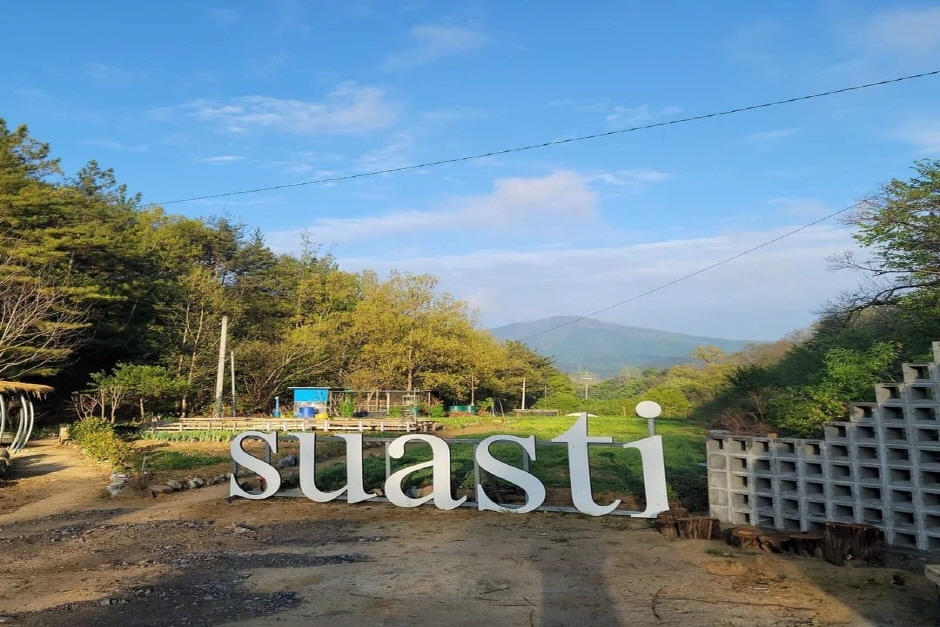

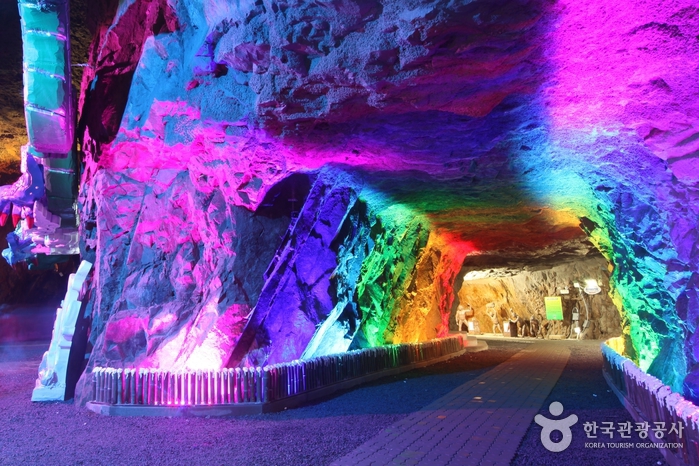
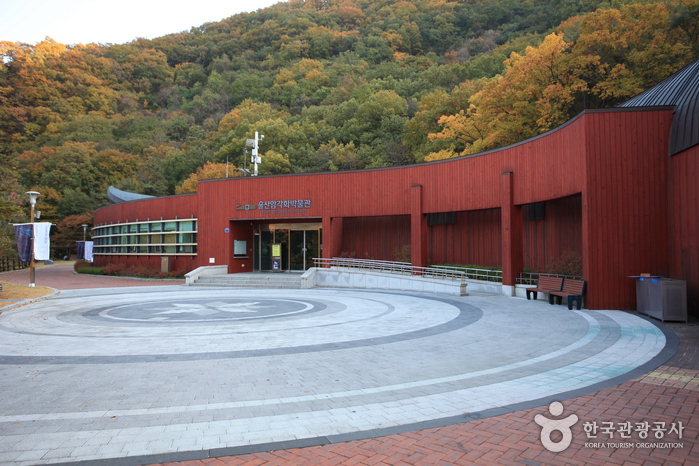
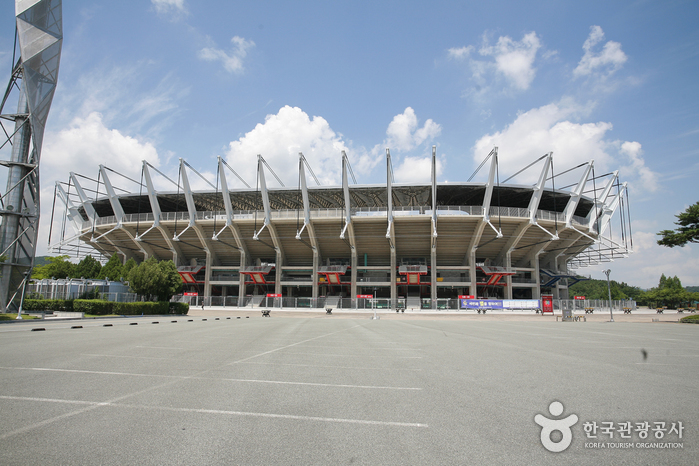
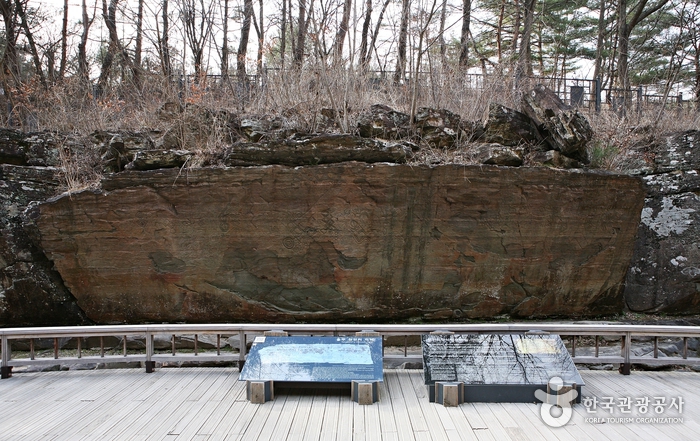
 English
English
 한국어
한국어 日本語
日本語 中文(简体)
中文(简体) Deutsch
Deutsch Français
Français Español
Español Русский
Русский